
Pet Product Reviews and Pet Care Info

Did you know that your pet birds need full spectrum light for good physical and psychological health? The Zoo Med Avian Sun 5.0 UVB compact fluorescent provides birds with safe levels of beneficial UVB and UVA. This is the full spectrum light just like the get in their natural environment. 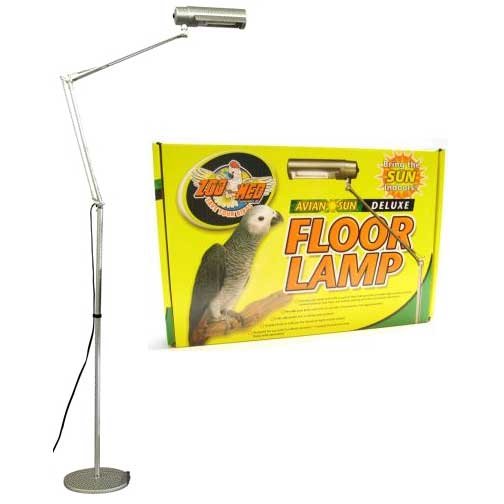
UVB enables birds to synthesize vitamin D3 which is needed for proper calcium metabolism. Calcium metabolism is necessary for normal growth, maintenance of strong bones, and egg production. UVA is visible to birds and enables birds to recognize mates, locate food on their amazing bird feeders, and identify different species. Birds are essentially colorblind without UVB.
The Zoo Med Avian Sun 5.0 UVB is made to be used with the Avian Sun Deluxe Floor Lamp. This lamp has a weighted base for stability and is fully adjustable! The adjustable neck allows you to adjust the lamp for the perfect position. Place the lamp directly overhead your bird at least 12 inches away from your bird. Do not place the lamp on the side of the cage because your bird will want to look directly at it and this could cause eye damage. Also, be sure to turn the light off at night so that your bird knows it is night time.
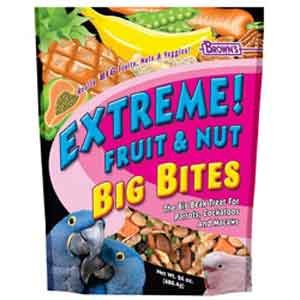 Of course you always want to hold your parrot, but something can prevent you from giving your bird the attention he deserves – the risk of him eliminating his waste on you! Luckily for bird owners everywhere, it is actually possible to train your pet parrot to not use YOU as the restroom. What you will do is recognize a signal from your bird that he needs to go to the bathroom, which will allow you the time to get him back into his cage in order to use his cage as his restroom. Once you understand the cues that your pet bird displays, he will always go to the bathroom in his cage!
Of course you always want to hold your parrot, but something can prevent you from giving your bird the attention he deserves – the risk of him eliminating his waste on you! Luckily for bird owners everywhere, it is actually possible to train your pet parrot to not use YOU as the restroom. What you will do is recognize a signal from your bird that he needs to go to the bathroom, which will allow you the time to get him back into his cage in order to use his cage as his restroom. Once you understand the cues that your pet bird displays, he will always go to the bathroom in his cage!
Now you have to start training your bird. Whenever you see your bird shifting his weight or squatting (which are usually signals he is getting ready to relive himself), you will give him a verbal command. It is very important that you identify the specific behavior your bird exhibits when he needs to go to the bathroom as it may be different for every bird. You will need to consistently give the “go potty” command every time your bird begins to relieve themselves, so you need to have a large block of time devoted to training your bird. The command you use is up to you, but usually something along the lines of “go potty” works well. Also keep in mind that every bird has a different potty schedule. Sometimes parrots can go to the bathroom every 20 minutes.
Once your bird makes the association between your command and his going to the bathroom, you can practice the command once he is out of the cage. Play with your bird out of the cage and pay attention to when he exhibits his potty behavior. When you see this behavior, put your bird back into his cage and give him your special command (“go potty”). When your parrot goes to the bathroom in his cage, praise him and reward him with his favorite treat. Repeat this process many times in a row, to really get your bird to understand his new trick. Once your bird has consistently relieved himself in his cage instead of on you, you will have officially trained your parrot!
Now you will need some yummy pet bird treats. Parrots love the Extreme Fruit and Nut Big Bites Bird Treats, pictured above. There is a variety of nuts as well as fruits in this mix that your parrot will love. The Extreme Fruit and Nut Big Bites Bird Treats is the perfect “special treat” food. If your bird does not like nuts, try the Fiesta Yogurt Dip – Parrot 3.5 oz treat. The Fiesta Yogurt Dip – Parrot 3.5 oz has real fruit pieces that are covered in yogurt. Delicious!
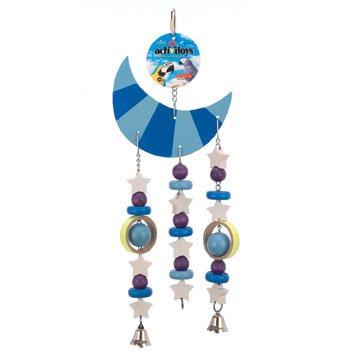 Pet birds are highly intelligent creatures. They need a lot of mental stimulation. Without that, they can become agitated and bored. Some ways that birds show that they are bored is by picking their feathers, screaming, or chewing on items they do not normally chew on (like their cage). They may experience changes in their eating habits. Perhaps they will stop eating foods they usually enjoy, or they may start overeating. A bored bird is a very unhealthy bird. Here are some ways to prevent boredom:
Pet birds are highly intelligent creatures. They need a lot of mental stimulation. Without that, they can become agitated and bored. Some ways that birds show that they are bored is by picking their feathers, screaming, or chewing on items they do not normally chew on (like their cage). They may experience changes in their eating habits. Perhaps they will stop eating foods they usually enjoy, or they may start overeating. A bored bird is a very unhealthy bird. Here are some ways to prevent boredom:
• Keep your bird’s cage in a place where your family often frequents. If your family spends a lot of time in the family room, put your bird’s cage there! If you work out of your house, keep your bird with you in your home office. If you and your family are gone for most of the day, be sure to make sure your bird feels like a part of the family when you are home.
• An easy way to prevent boredom is to frequently rotate the toys that are in your bird’s cage. Also check your bird’s toys for large amount of wear and tear. Birds can injure themselves on worn down toys, so be sure to replace the most worn down ones. The most worn down toys also give you insight into which toys your bird plays with the most. If your bird likes hanging toys, like the Triple Moon Toy for Birds – Large, shown to the right, be sure to provide your bird with a variety of hanging toys. If your bird likes having a mirror in his cage, give him a new and different mirror like the Hall or Mirrors Bird Toy. If your bird likes swings in his cage, give him the Pet Bird Swing. This swing has 4 different perches on it, which will provide your bird with more entertainment than the usual bird swings.
• Spend one on one time with your bird each day. Some birds like having their heads or back scratched. If your bird likes this type of attention, be sure to give it to him! But also be sure to change up your one on one time. Your bird will be bored if you just scratch his head for a few minutes every day. Your bird would love if you taught him new tricks! Basically, the more you switch it up the better. Sometimes your bird does not feel like being outside of his cage. You need to pay attention to your bird’s mood. If he seems anxious or fidgety during one on one times, he probably feels like napping or just hanging out by himself in his cage.
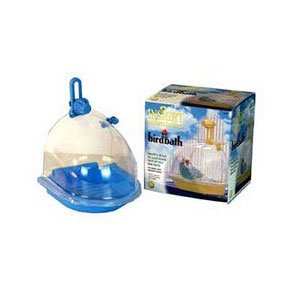 Each individual pet bird varies in their preferred method of bathing. Birds also vary in the amount of bathing they prefer. Some birds want to take baths every day, and some prefer to take baths only once a week. Once you conclude how often your bird likes to bathe, be sure to give him the chance to bathe as often as he would like!
Each individual pet bird varies in their preferred method of bathing. Birds also vary in the amount of bathing they prefer. Some birds want to take baths every day, and some prefer to take baths only once a week. Once you conclude how often your bird likes to bathe, be sure to give him the chance to bathe as often as he would like!
Smaller birds (for example: parakeets), usually like to take a bath right inside their cage! You need to supply them with little bird bathtubs. I bought my small bird the Insight Bird Bath for Small Birds, shown to the right. This bird bath fits in most small and medium sized bird baths. Another type of in-cage bird bath that may fit larger birds is the Insight Inside the Cage Bird Bath for Pet Birds. Your bird will love taking baths in either of these bird baths! If your bird is too large for a in-cage bath, he may enjoy sitting in the sink and letting a gentle stream of water clean him.
Some birds do not enjoy baths, nor do they enjoy getting soaking wet. They may prefer to be misted with warm water. To properly clean pet bird’s feathers, you can use Feather Glo Bird Bath Spray. It is specially formulated to prevent feather picking because it cleans your bird’s feathers without stripping away the healthy oils. It is a non-irritating formula, and it will not irritate your bird’s eyes.
The best thing to do is give your pet bird the opportunity to experience all the different methods of bathing. Then, you will be able to see which method of bathing your pet bird prefers, and you will be able to provide your bird the necessary supplies!
Keep in mind that you never need to add soap to your bathing bird’s water. All birds need to get clean is plain water. Soap can can wash away protective oils in their feathers, which will cause your bird to pick at their feathers. Also, your bird should take a bath early in the morning so they will be dry when its time to go to bed.
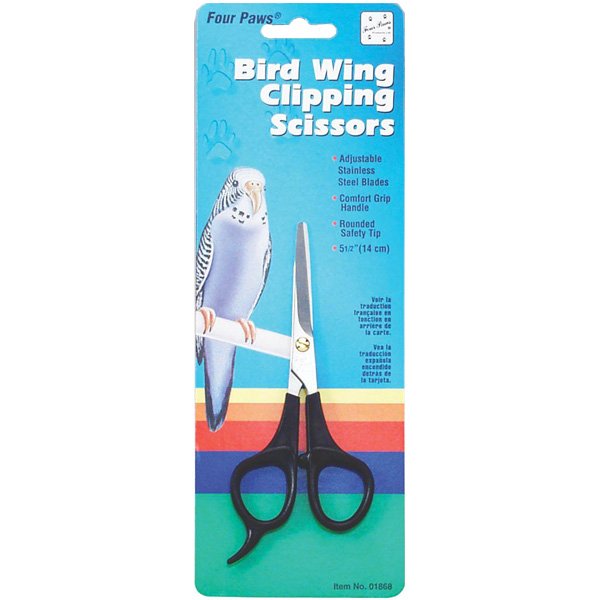 Wing trimming can be a somewhat complicated process. The goal is to cut the wings short enough so that that bird can not fly away, but long enough that that bird has some control over his flight. For example, if a bird is stranding on the top of his cage and he falls off, he needs to be able to glide down safely.
Wing trimming can be a somewhat complicated process. The goal is to cut the wings short enough so that that bird can not fly away, but long enough that that bird has some control over his flight. For example, if a bird is stranding on the top of his cage and he falls off, he needs to be able to glide down safely.
The main problem with wing trimming is that it is easy to injure a bird’s wings. If you are not careful, many accidents can occur. In most situations, it would be preferable to have your veterinarian to clip your bird’s wings. However, if you are an experienced bird owner, it is possible to safely trim your bird’s wings. Remember, you should always have a partner helping you out!
Here are the steps you need to take:
1) Find an area where you can lay your bird on his back and spread his wings out.
2) After your bird is wrapped in a towel and laid on his back, spread out one wing.
3) Check for blood feathers, which are feathers that are currently growing in. You need to wait until these feathers are fully grown in until you clip them. If you accidentally cut them, your bird will bleed. If bleeding occurs, you can use Antiseptic Quick Blood Stopper Gel to staunch the flow of blood.
4) Clip each fully developed flight wing at the tip. You will cut to the length of the feathers above the flight feathers. You will be cutting the first 6 to 8 feathers on each wing. The exact number of wing feathers you will be cutting depends on the type of bird you have. Birds that are long and lean have more flight feathers. Short birds have less flight feathers.
Now for the tools:
You will need to purchasing clipping scissors, like the Bird Wing Clipping Scissors. These scissors have a comfort grip handle and stainless steel sheers. The sheers are short so you will be able to have full control over which feathers you intend to clip. The tip is rounded so you will not poke or prod your bird. The Bird Wing Clipping Scissors are the best scissors for clipping your bird’s wing feathers!
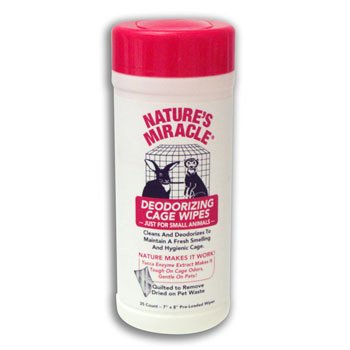 You want the best for your pet bird, so if you are not cleaning his cage weekly, then you should be! If your bird is particularly rambunctious, you might want to clean his cage more often than weekly. Keeping the cage clean is vitally important for the health of the bird.
You want the best for your pet bird, so if you are not cleaning his cage weekly, then you should be! If your bird is particularly rambunctious, you might want to clean his cage more often than weekly. Keeping the cage clean is vitally important for the health of the bird.
Cleaning the cage is easy enough. You can put the empty cage into a shower and turn on the water to high heat. Blast the inside of the cage to loosen stains for about 5 minutes. Then you can take a chore boy or scrubber sponge to remove any remaining dirt. Once all dirt is gone from the cage, you need to disinfect the cage. Follow the instructions exactly as they are on a bottle of disinfectant. Rinse the cage thoroughly after using any disinfecting product. Before you put your bird and his accessories back in the cage, use a product like the Natures Miracle Deodorizing Cage Wipes, shown to the right, which will leave your cage smelling fresh and clean. It will also ensure that any remaining bacteria is wiped away.
There are daily activities you can do to maintain a clean environment for your bird. When you feed your bird in the morning, you can take a quick moment to tidy up the cage. You could use the Natures Miracle Deodorizing Cage Wipes every day, to quickly wipe away dirt and odors. You can also use Perch Cleaner for Pet Birds to scrub away any droppings that might be covering the perch. It is a hand held brush that comes with metal bristles that make cleaning the perch a quick and easy task. You do not want your bird to have to walk in his own waste. Maintaining a cleanly cage daily will mean it will take less time for you to clean it on the weekend!
Another daily activity every bird owner should be responsible for is cleaning the cage tray liner. If you use an absorbent cage liner, your bird’s cage will remain cleaner throughout the day because it absorbs urine, so the bird does not have to walk in it. A good brand of liners are the Absorbent Cage Liners for Birds – 7 pack. These thick liners do not leak, so they make for incredibly easy clean up. You can cut it so it properly fits your bird’s cage.
Did you know that birds are very interactive pets. You may even find yours to be affectionate, if you put in some effort. A great bird to start with is a cockatiel. A cockatiel is easy to care for, but will need socialization. The means your bird will need your attention and would also benefit from a feathered friend to share his cage. 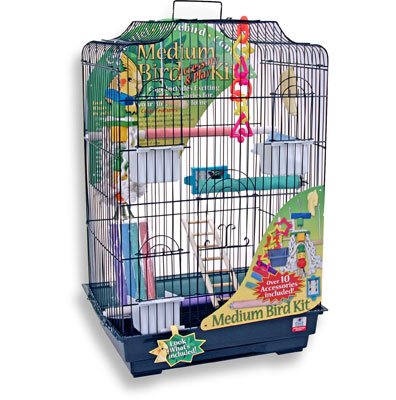
Basic requirements
1. a clean cage
2. a healthy diet
3. activity and attention
4. exercise
There are many starter bird cage sets available that will contain all the accessories necessary for a happy bird.
The Advantage Starter Kit for Medium Birds shown above includes everything, except the bird and food. Included are seed & water cups, treat cup, calcium block, comfort perches, wood ladder, spinning play links, rings, swing, mirror with beads, rope toy.
Your bird should be feed a good-quality cockatiel seed mix. A seed diet should be supplemented with fresh fruit and vegetables on a daily basis to prevent your bird from becoming overweight.
Cockatiels like to be played with, petted and talked to. It is important to keep toys in the cage because they can become bored and even depressed if they have nothing to do.
Your cockatiel should be let out of his cage everyday for at least an hour. You bird should be allowed to walk around, sit on your shoulder or even fly around.
The average life span of a cockatiel is over 10 years and up to 20 years. Take good care of your pet and he can live a long healthy life.
 Being in a cage for most of the day can be very boring for your pet bird and can make him or her very unhappy, which can lead to a variety of destructive behaviors. By using a variety of bird toys and bird cage accessories, your pet bird will stay mentally stimulated throughout the day and be less likely to harm him or herself or do damage to home when left outside of the cage. To make life more interesting for your pet bird, hang a variety of bird toys in the cage, install mirrors for your pet bird to enjoy, put different sized perches at various heights inside of the cage and rotate the items in your bird’s cage every once in a while for a change. Not only will your pet bird be much happier, but it will also help to keep your bird healthier. Here are a few items that are sure to make life more interesting for your pet bird:
Being in a cage for most of the day can be very boring for your pet bird and can make him or her very unhappy, which can lead to a variety of destructive behaviors. By using a variety of bird toys and bird cage accessories, your pet bird will stay mentally stimulated throughout the day and be less likely to harm him or herself or do damage to home when left outside of the cage. To make life more interesting for your pet bird, hang a variety of bird toys in the cage, install mirrors for your pet bird to enjoy, put different sized perches at various heights inside of the cage and rotate the items in your bird’s cage every once in a while for a change. Not only will your pet bird be much happier, but it will also help to keep your bird healthier. Here are a few items that are sure to make life more interesting for your pet bird: